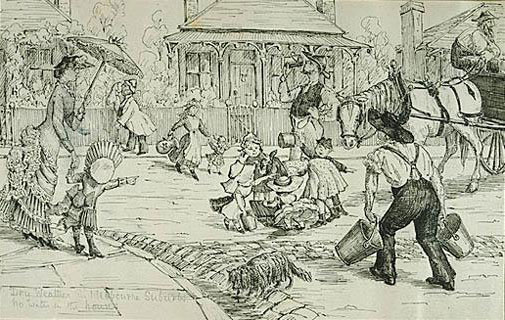 Dry weather in Melbourne, 1882
Dry weather in Melbourne, 1882
TLF ID R4649
This is a black-and-white drawing in pen and ink depicting a street scene in Melbourne in 1882. It is captioned 'Dry weather in Melbourne suburbs, no water in the houses'. Measuring 10.0 cm x 15.5 cm, the drawing shows a range of activities involving men, women and children. One man appears to be struggling under the weight of two buckets, although they are not full. Two of the children in a group playing on the road in the middle of the scene are holding buckets. Another child has a jug. On the right-hand side, a man is squatting on a horse-drawn cart. Another man is drinking from a container. On the left-hand side, a woman with a parasol and a girl are standing on a footpath. Nearby, a dog is drinking from a paved open drain. In the background, behind a low fence, are several single-storey houses with brick chimneys.
